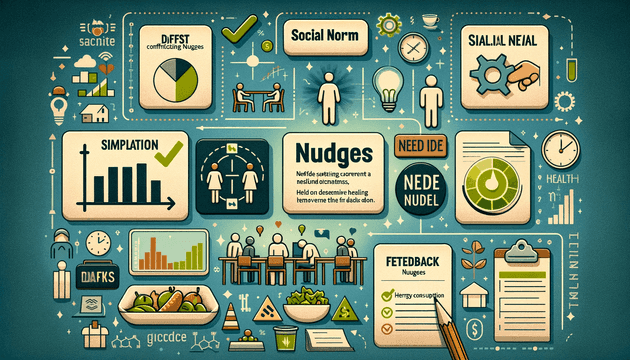In the world of behavioral economics, the term "nudge" has become a powerful concept in influencing the decision-making processes of individuals. Coined by Richard Thaler and Cass Sunstein in their influential book "Nudge: Improving Decisions About Health, Wealth, and Happiness," a nudge is defined as any aspect of the choice architecture that alters people’s behavior in a predictable way without forbidding any options or significantly changing their economic incentives.
Types of Nudges
-
Default Nudges: These are based on setting a default choice which is more likely to be chosen because of inertia. For example, automatically enrolling employees in a retirement savings plan but giving them the option to opt out.
-
Social Norm Nudges: These nudges use the power of social influence. By showing that a particular behavior is the norm, individuals are more likely to conform. An instance of this is hotels indicating that most guests reuse their towels, encouraging others to do the same.
-
Simplification Nudges: These are based on the principle that if a choice is easier to understand, it's more likely to be chosen. For instance, simplifying the paperwork for financial aid can increase college enrollment.
-
Salience Nudges: These nudges make certain options more prominent or visible. An example is placing healthier foods at eye level in a cafeteria to promote better eating habits.
-
Feedback Nudges: Providing feedback about behavior can influence future decisions. For example, a monthly report on electricity usage compared to neighbors nudges people to reduce their consumption.
Examples of Nudges in Action
-
Organ Donation: In countries where organ donation is an 'opt-out' system (default nudge), there's a higher rate of organ donors compared to countries where you have to 'opt-in'.
-
Healthy Eating: In school cafeterias, placing fruits and vegetables at the beginning of the serving line (salience nudge) has been shown to increase their consumption among students.
-
Financial Decisions: Apps that round up purchases to the nearest dollar and save the difference (simplification nudge) make it easier for people to save money without feeling a significant impact on their finances.
-
Environmental Conservation: Showing a building’s energy consumption in real-time compared to other similar buildings (feedback nudge) can motivate reductions in energy use.
-
Public Health: During the COVID-19 pandemic, social norm nudges were used by displaying signs about mask-wearing being a common practice, thereby encouraging more people to wear masks.
Conclusion
Nudges represent a subtle yet powerful way to influence human behavior positively. By understanding how different types of nudges work, policymakers, businesses, and even individuals can create an environment where making the best choice becomes the easiest option. It's a testament to the power of gentle persuasion over forceful compulsion.
